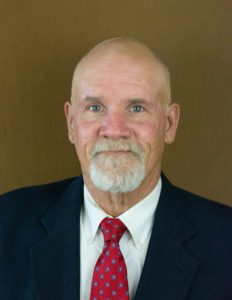
Dusty Roach
Greetings and salutations—and welcome to this month’s installment of Safety. Hopefully everyone has survived the endless variations of the Covid. Another topic for another day!
In any line of business, goals must be clear and precise. Safety is no different. When filling positions for safety or operations, a manager must apply sufficient time and detail to ensure that the persons being hired are not just informed of the organization’s goals but fully capable of carrying them out. When it comes to implementing a healthy safety program, foresight is critical. This month we explore new ways to approach safety and operations by the use of a progressive disciplinary action.
I’ve not run across a successful safety program that did not work hand in hand with a well established Human Resources department. With all of the labor laws involved there are an infinite amount of pitfalls. Such is the situation that, merely by virtue of the nature of Safety, companies are prone to fall into those pitfalls. Navigating labor laws and their impact on the labor force, especially in these days of difficulty in finding qualified help, is a formidable challenge. However, with a well developed progressive disciplinary action program laid out in conjunction with HR, the pitfalls can be avoided.
Aside from a shallow talent pool, largely due to the Great Resignation trend that arose with the onset of Corona, companies face the prospect of having to give up on getting the perfect candidate, and instead hire the best available candidate. This brings us to the importance of having a detailed progressive disciplinary program.
Progressive discipline is a method of discipline that uses graduated steps for dealing with problems related to an employee’s conduct or performance that do not meet clearly defined standards and policies. Progressive discipline also promotes open communication between a supervisor and his or her employee, thus improving employee productivity.
Before we go into the mechanics of what I’m trying to illustrate, let’s establish some clear definitions.
“Discipline” derives from the root discere, which means “to learn.”
“Action”: the fact or process of doing something, typically to achieve an aim.
Progressive discipline does not employ the term “punish” or “terminate.” The process is designed to create a clear and precise environment for learning the proper actions to reach understanding and to know the goals of a job.
By today’s standards, disciplinary action is defined as “the steps to run someone off.” In the hiring process, from entry level to the skilled professional, the verbiage (associated with progressive discipline) needs to be explained from the beginning. It is important to lay the groundwork to the employees. Such groundwork needs to be explained in detail.
Regardless of how you present the progressive disciplinary program, our industry is famous for not explaining the true intent. Sadly, when explaining a disciplinary action to underperforming individuals, managers often find the individuals take immediate umbrage and usually start looking for another job. The employee doesn’t want a spanking. That’s why it is important to explain the intent up front, maybe in the hiring process before the performance issues arise. Turnover costs companies thousands of dollars each year.
When a progressive disciplinary program is rolled out correctly, you avoid litigation and turnover, and you run the “risk” of turning a low performing employee into a productive long-term, valued employee. It’s a win-win scenario.
Historically, companies that utilize a progressive disciplinary program have fewer labor issues, better performance, and lower turnover. Another by-product: employees are happier. If you have processes in place and are consistent, the safety performance will follow suit. A strong HR department plays a key role in Safety.
As stated in previous articles, the most common issues regarding safety are not employees being unaware of the rules. The employees know the rules yet take individual exception to the rules. The failure to follow the rules could be attributed to lack of supervision, lack of enforcement, or a blatant disregard for the rules and regulations. We call this individual exception. If this is caught early, it can be a valuable learning experience.
A verbal disciplinary action may be called for. But merely calling it a “verbal” does not mean there is no documentation required. Quite the contrary. When covering the verbal write up, you indicate this is what we as a company expect! If you are unwilling or unable to comply, this is what you can expect. A second or third infraction of the same offense will result in retraining or termination.
This eliminates all doubt or confusion of expectations from both parties involved.
I highly recommend a strong HR presence for success in safety!
I’ve run out of time and space but I hope this has helped you see the value of a strong HR to team up with Safety to go to the next level.
Safety is like baseball—it’s not how many hits you have, it’s how many times you reach home safely that counts! —Dusty
___________________________________________________________________________________________________
Dusty Roach is a safety professional based in Midland. He is also a public speaker on subjects of leadership and safety, and he maintains a personal website at dustyroach.com.









